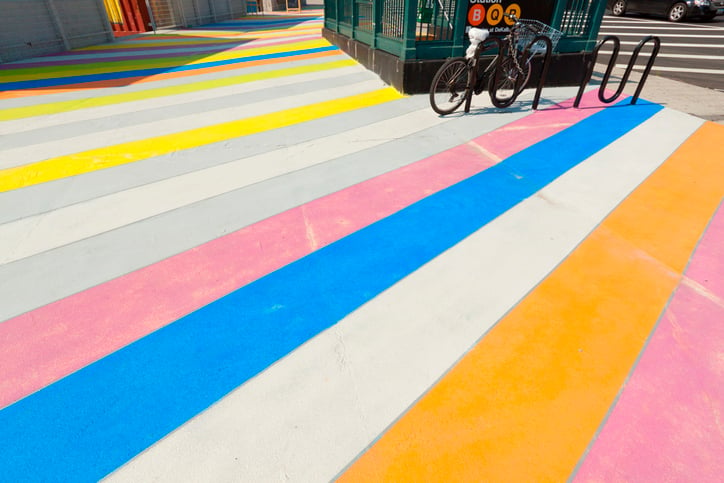
If your New Year’s resolution for 2023 is to make a positive difference in your community, tactical urbanism may be the toolkit you’re looking for.
The term itself may be unfamiliar to you, but chances are you’ve already seen tactical urbanism in action, whether in the form of street-spanning plazas, guerilla community gardens, or pop-up outdoor seating for a restaurant.
Tactical urbanism empowers us as both citizens and builders to use our skills, knowledge, and creativity to improve the cities and towns we live in right now.
In this article, we will explain what tactical urbanism is, explore what makes it an attractive approach, and outline a few tactical urbanism success stories. We will also provide a shortlist of resources to help you launch a tactical urbanism project of your own and discuss some of the barriers you might face.
Jump Ahead:
- What is tactical urbanism?
- Why use tactical urbanism?
- 4 tactical urbanism case studies
- The Superblocks Program
- Piazze Aperte
- The Transformation of Time's Square
- Walk [Your City]
- How to start your own tactical urbanism project
- Challenges of tactical urbanism
Define tactical urbanism: What is tactical urbanism?
Tactical urbanism is a fast, cheap, action-oriented approach to making meaningful civic changes to neighborhoods, towns, and cities.
Throw down some tires and spraypaint a mural on an underused street to reclaim the space for pedestrians. Set a line of potted plants on the shoulder to create a makeshift bike lane. Scatter some lawn chairs in an abandoned parking lot for a pop-up cafe.

These are all examples of what tactical urbanism looks like in action. It’s all about working with what you have to enact immediate improvements in the shared spaces where we connect and relate with one another. The COVID-19 era in particular has seen a profusion of these kinds of short-term interventions as we have shifted more of our activities outdoors, requiring us to imagine alternative uses for urban environments typically dominated by cars.
The changes brought about by tactical urbanism are often temporary, but as we will discuss in greater detail in a moment, they can also lead to permanent transformations.
Tactical urbanism emerged as a solution to the shortcomings of traditional city planning, which is good at overseeing major infrastructure projects like the construction of bridges and highways, but can be frustratingly slow at implementing even minor changes on a more localized scale. Tactical urbanism goes by a host of other names, including guerrilla urbanism, DIY urbanism, and urban acupuncture—the latter being an idea popularized by Jaime Lerner, the renowned urban theorist and former mayor of Curitiba, Brazil.
“The lack of resources is no longer an excuse not to act. The idea that action should only be taken after all the answers and the resources have been found is a sure recipe for paralysis. The planning of a city is a process that allows for corrections; it is supremely arrogant to believe that planning can be done only after every possible variable has been controlled.”
- Jamie Lerner
Though the techniques it describes are nothing new, the term “tactical urbanism” was first coined in 2010 by New York based architect Mike Lydon. Here’s how he, along with co-author Anthony Garcia, describe the title subject in their book Tactical Urbanism: Short-term Action for Long-term Change:
“Tactical urbanism is an approach to neighborhood building and activation using short-term, low-cost, scalable interventions and policies. Tactical urbanism is used by a range of actors, including governments, business and nonprofits, citizen groups, and individuals.”
In other words, anyone can be a practitioner of tactical urbanism. It therefore comes in many forms, from projects sanctioned by municipal governments to guerrilla activities launched by citizens acting without express permission from a central authority.
Why use tactical urbanism?
Tactical urbanism offers a leaner, more agile alternative to the conventional routes of creating change within the built environment. And the built environment is in great need of change: Urbanization is on the rise, yet the supremacy of the automobile is the cause of an unsettling array of negative health and environmental impacts in our cities and suburbs.
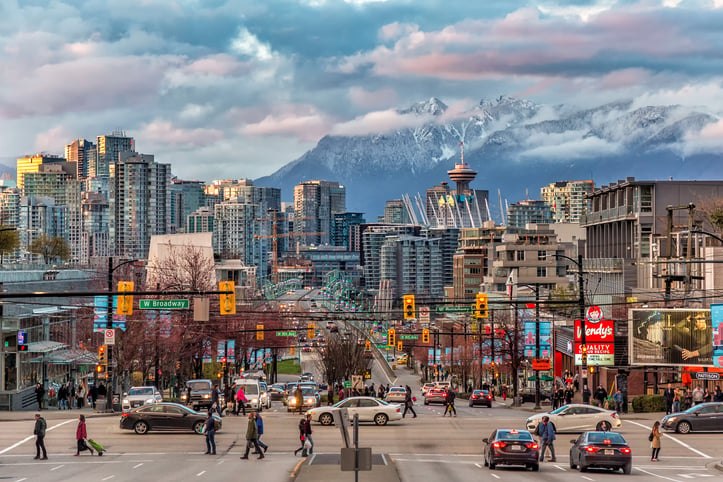
Here are a few why tactical urbanism might be a viable path forward:
1. Tactical urbanism is fast
The wheels of city governance are often slow, and while this deliberative process is essential to our democracy, it can sometimes stymy efforts to make even simple improvements in our towns and cities. Using tactical urbanism techniques, citizens can make essential changes to their neighborhoods right now rather than waiting weeks, months, or even years for a vote by the city council or planning and zoning and commission.
2. Tactical urbanism is affordable
Altering the urban landscape can be expensive, but it doesn’t have to be. By using materials as readily available as paint and potted plants, practitioners of tactical urbanism are able to initiate sweeping changes to their surroundings at minimal financial cost.
3. Tactical urbanism promotes experimentation
Computer models and conceptual studies can provide critical insight, but sometimes we won’t know if an idea will work until we try it out in real life. Tactical urbanism provides a temporary laboratory for cities to test the effects, financial costs, benefits, and pitfalls of projects before fully committing to them. By experiencing changes to the urban environment first hand, citizens can also better decide if they want them to remain permanent.
4. Tactical urbanism reveals alternatives
For all their fast moving parts, our cities and towns can often feel static and unalterable. Tactical urbanism opens up a broad horizon of possibilities, encouraging people to reimagine and engage with the urban landscape in new and exciting ways. Beyond concrete improvements, areas where tactical urbanism is deployed also often end up beautified and enlivened as a result.
5. Tactical urbanism inspires public participation
No one knows better what a community needs than the people who live in it. Yet most alterations to the urban fabric are either a matter of routine maintenance or the results of top-down decisions made by governments and developers in distant board rooms.
Tactical urbanism promotes social cohesion by empowering citizens to work together using grassroots, DIY techniques to take a more proactive participatory role in the creation and upkeep of the shared spaces we live, work, and play in.
6. Tactical urbanism is attainable
Big changes can be daunting, but tactical urbanism puts even large-scale community improvement projects within reach. By embracing the fast low-cost approach of tactical urbanism, citizens and institutions are able to get off the sidelines and put their visions into action immediately.
Four tactical urbanism Case Studies
There are dozens of examples of successful city and citizen-led tactical urbanism initiatives all around the world.
Here are a few standouts:
The Superblocks Program: Barcelona
If you’re wondering how, if at all, tactical urbanism can be used to bring about lasting change, look no further than Barcelona’s superblocks program.
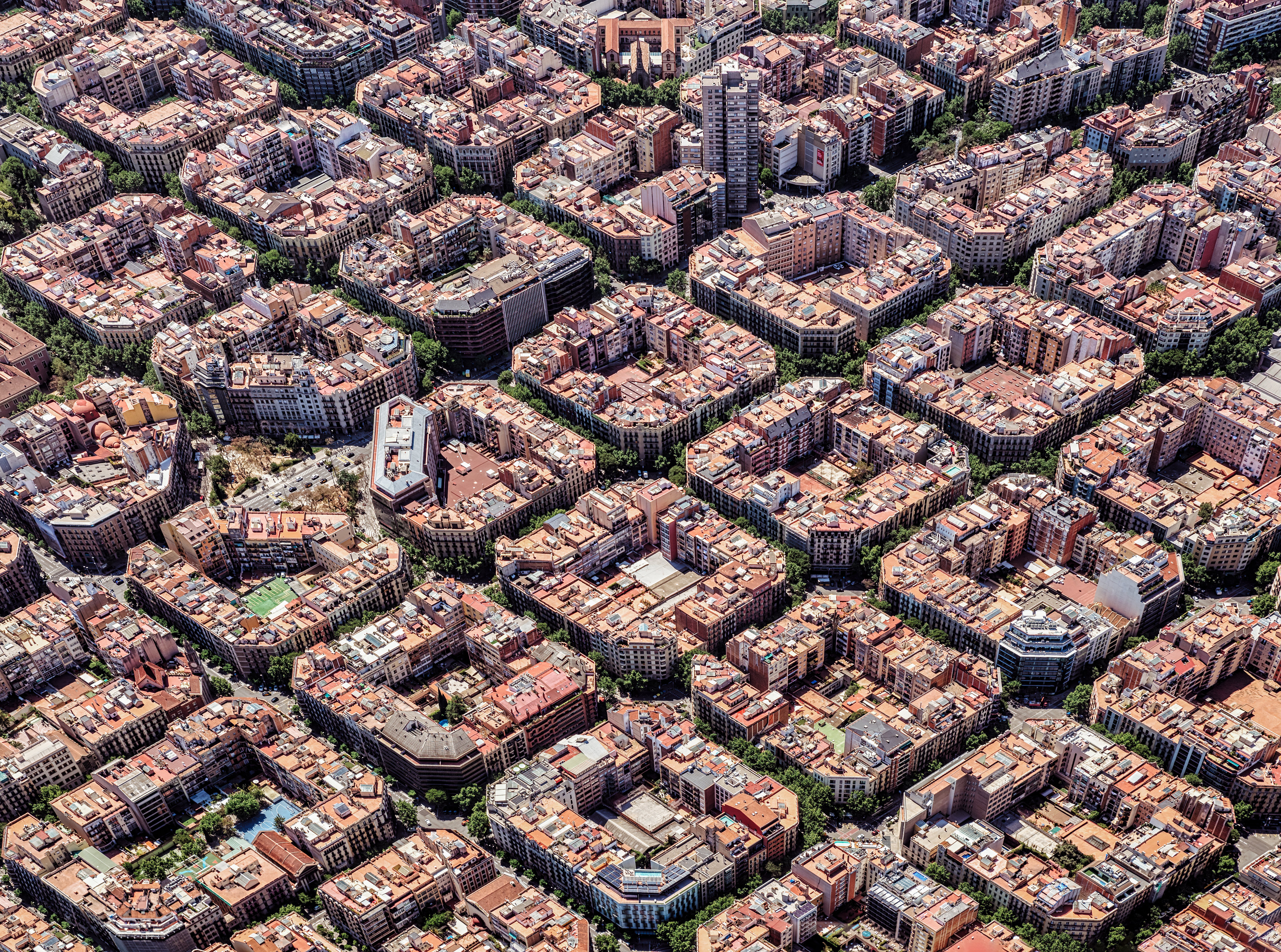
The 2,000 year-old Spanish city is angling to become a model of the sustainable metropolises of the future by taking back vast swaths of its urban landscape from cars and giving it back to pedestrians. It proposes to achieve this radical transformation through the deployment of superilles, or “superblocks:" large blocks of existing city blocks within which automobile traffic is either significantly reduced or eliminated entirely. Inside a superblock, neighborhood streets are converted into walkable plazas, outdoor seating, gardens, and green space, with the bulk of vehicular traffic pushed to the borders.
Tactical urbanism was instrumental in the creation of the city’s very first superblocks. To delineate the boundaries where cars were no longer allowed in the Poblenou and Saint Antoni districts, Barcelona’s city planners partnered with local architecture students to paint signs on the streets and deploy lawn chairs, rubber tires, and trees in planters. These temporary alterations—inspired in part by Lerner’s use of urban acupuncture to create the Rua das Flores pedestrian zone in Curitiba—led to a permanent change in how the street space within those neighborhoods is used.
Barcelona’s superblocks program is still young, but many cities around the world are looking to it as a model for how to dramatically improve the health and livability of the urban landscape. With six completed so far, Barcelona’s leaders have adopted a bold plan to create a total of 503 superblocks across the entire city—a plan that they estimate could reduce car traffic by 61% and open more than 6 million square meters of space for use by pedestrians and bicyclists.
Piazze Aperte: Milan
Barcelona is not the only city that has successfully deployed tactical urbanism to reclaim its streets from cars and give the space back to people.
As part of its Piazze Aperte (Open Plazas) program launched in 2018, the Italian city of Milan has created 38 public squares in underutilized city streets and underserved neighborhoods. The city was able to open up these spaces for easier and safer use by the community simply by scattering benches and planters and painting decorative patterns on the asphalt. The result: One in two of Milan’s 1.35 million residents now has a public square within 15 minutes of their front door.
Milan’s Piazze Aperte program is an example of sanctioned tactical urbanism. That is, the tactical urbanism approach was approved and directly executed by the city’s planning department in a public-private partnership with Bloomberg Associates.
The transformation of Times Square: New York City
One of the most notorious examples of tactical urbanism in action is the transformation of Times Square into a pedestrian zone.
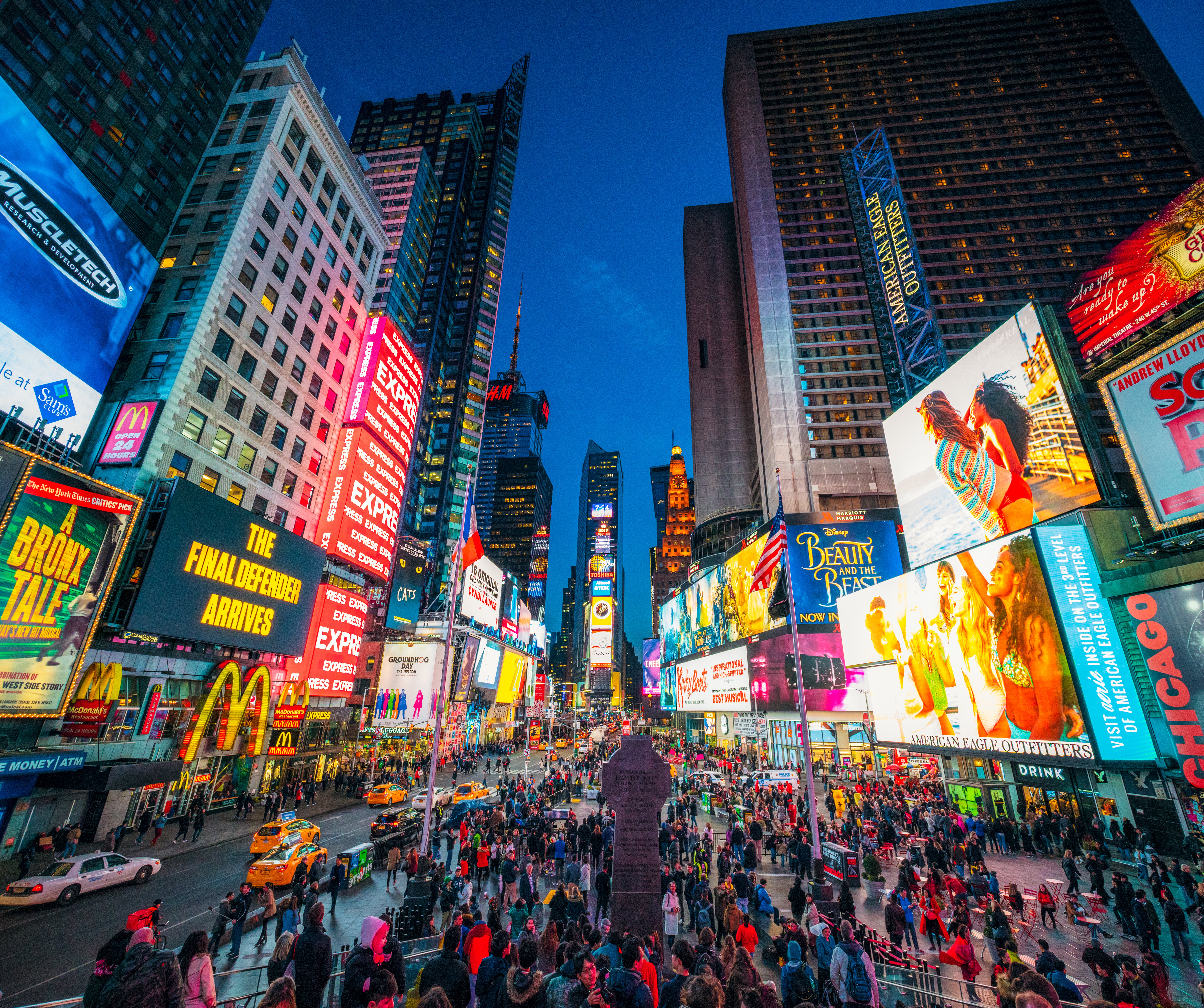
As early as 2009, the iconic commercial district in the heart of the Big Apple was congested with car traffic. Fast-forward to today: cars are (mostly) banned and much of the bowtie-shaped space has been converted into plazas. The effort was spearheaded 14 years ago by Janette Sadik-Khan, a former NYC Department of Transportation commissioner turned renown urban theorist who used paint and folding chairs to achieve the transformation. The application of tactical urbanism proved so successful that the conversion of Times Square was made permanent by architecture firm Snøhetta in 2017.
Walk [Your City]
So far, our examples have focused on projects led by city governments. This next entry, however, is a prime example of how an individual citizen using tactical urbanism can spark positive change in not just one, but many cities.
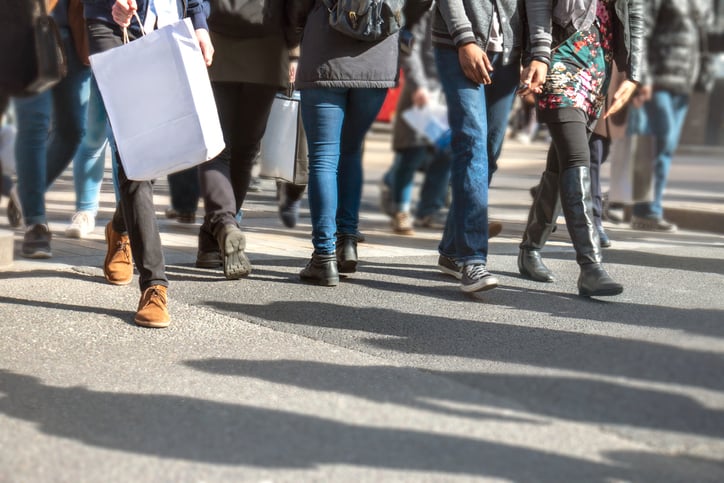
In January 2012, Matt Tomasulo was a 29-year old graduate student studying landscape architecture and urban planning at North Carolina State. A topic that interested him was walkability: a measure of how well or poorly a city or town can be traversed on foot. It should come as little surprise that our car-dominated cities in the US are some of the most unwalkable in the world. Knowing that walking comes with a host of health benefits, Tomasulo was determined to find a way to promote travel on foot.
The solution he struck upon was an inspired example of tactical urbanism. Under the cover of darkness, Tomasulo and two “fellow guerillas” went out into the streets of Raleigh, NC and placed 27 corrugated plastic signs at three intersections. On each sign was a simple message: how long it would take to walk from where the viewer stood to popular nearby destinations.
Here's Tomasulo on what happened next:
“Within days, the project had received hundreds of “likes” on Facebook. Within weeks, I was speaking with local, national and international media outlets. By the end of the year, I had won awards, been invited to international conferences, been profiled in the local newspapers, and, perhaps most importantly, been contacted by organizations across North America interested in replicating my efforts.”
The final result was “Walk [Your City]”, a civic-minded organization that spread its guerrilla wayfinding tactics to multiple cities across the US.
How to start your own tactical urbanism project
The tactical urbanist has a wealth of tools, techniques, and materials that they can deploy at a moment’s notice to achieve their goals. If you’re interested in launching a tactical urbanism project of your own, check out the following free resources to help spark your engine:
- The Tactical Urbanist’s Guide to Materials and Design: Published by the Street Plans Collaborative, the design firm of tactical urbanism movement founders Mike Lydon and Anthony Garcia, this free online guide provides an easy-to-use roadmap for designing and building your own tactical urbanism project.
- The Asphalt Art Guide is a free to use resource by Bloomberg Associates that provides a how-to manual and showcases a variety of plaza and roadway art projects around the world.
- Tactical Urbanism, Volumes 1-5: Also published by Street Plans, these free online compendiums document a variety of tactical urbanism success stories around the world.
Challenges to tactical urbanism
Tactical urbanism isn’t without its stumbling blocks.
As you can imagine, a DIY approach to community improvement can be a source of tension between government officials and citizens. While some cities like Fayetteville, Arkansas have encouraged their residents to launch tactical urbanism projects of their own, others like Hamilton, Ontario have branded tactical urbanism as “vandalism” and “unauthorized activity on our city streets.” When and where should tactical urbanism be deployed, and by whom? This is a conversation that communities will have to engage in and resolve on an individual level.
Another barrier to tactical urbanism is public buy-in. As places like Curitiba and Barcelona can attest to, transforming city streets into pedestrian zones overnight can provoke strong reactions from area residents and business owners, not all of them positive. In the case of both aforementioned, public opposition to the street conversions eventually softened. Still, practitioners of tactical urbanism should be prepared to respond constructively to criticism and even reverse course if public opposition proves overwhelming.
Bottom Line
Whether done with the approval of a city government, striking out alone, or in partnership with fellow citizens, tactical urbanism offers us a way to make a positive difference in our communities today rather than tomorrow. Is there an improvement you’d like to see in your neighborhood? Then there’s no time to waste: grab a paint bucket and a potted plant, get out into the streets, and make it happen.